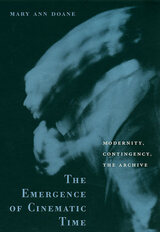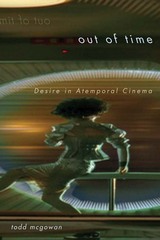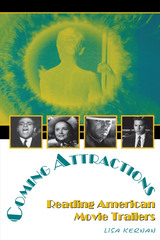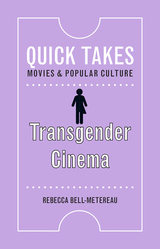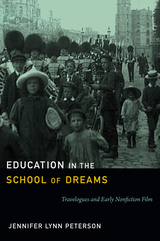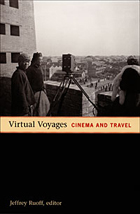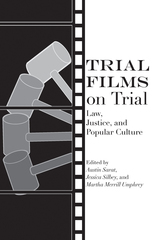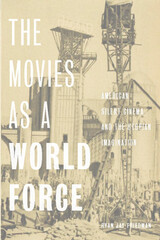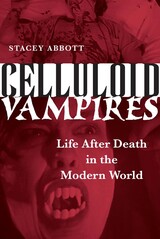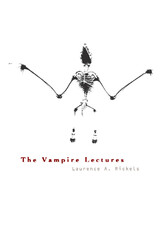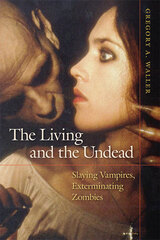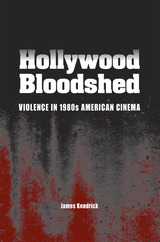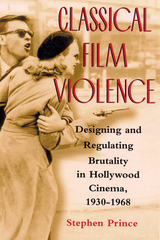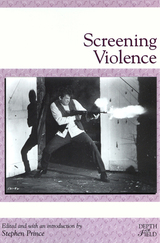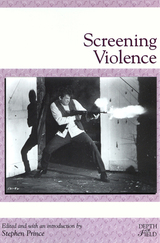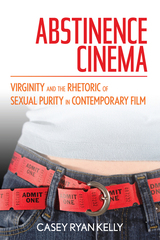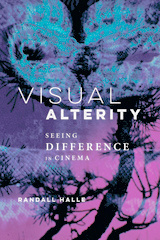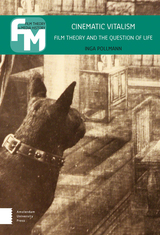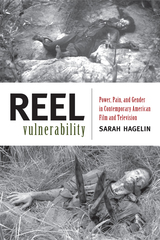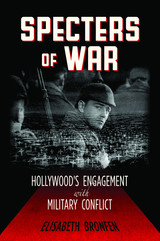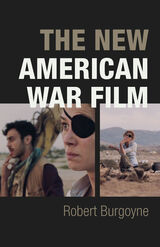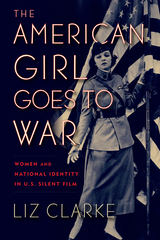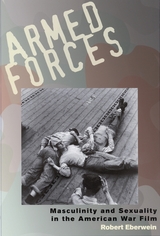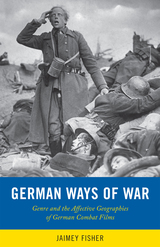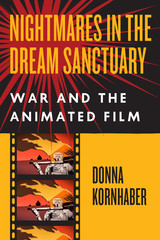Classical Film Violence: Designing and Regulating Brutality in Hollywood Cinema, 1930-1968
Rutgers University Press, 2003
Cloth: 978-0-8135-3280-6 | eISBN: 978-0-8135-6817-1 | Paper: 978-0-8135-3281-3
Library of Congress Classification PN1995.9.V5P75 2003
Dewey Decimal Classification 791.436
Cloth: 978-0-8135-3280-6 | eISBN: 978-0-8135-6817-1 | Paper: 978-0-8135-3281-3
Library of Congress Classification PN1995.9.V5P75 2003
Dewey Decimal Classification 791.436
ABOUT THIS BOOK | AUTHOR BIOGRAPHY | TOC
ABOUT THIS BOOK
Stephen Prince has written the first book to examine the interplay between the aesthetics and the censorship of violence in classic Hollywood films from 1930 to 1968, the era of the Production Code, when filmmakers were required to have their scripts approved before they could start production. He explains how Hollywood's filmmakers designed violence in response to the regulations of the Production Code and regional censors. Graphic violence in today's movies actually has its roots in these early films. Hollywood's filmmakers were drawn to violent scenes and "pushed the envelope" of what they could depict by manipulating the Production Code Administration (PCA).
Prince shows that many choices about camera position, editing, and blocking of the action and sound were functional responses by filmmakers to regulatory constraints, necessary for approval from the PCA and then in surviving scrutiny by state and municipal censor boards.
This book is the first stylistic history of American screen violence that is grounded in industry documentation. Using PCA files, Prince traces the negotiations over violence carried out by filmmakers and officials and shows how the outcome left its traces on picture and sound in the films.
Almost everything revealed by this research is contrary to what most have believed about Hollywood and film violence. With chapters such as "Throwing the Extra Punch" and "Cruelty, Sadism, and the Horror Film," this book will become the defining work on classical film violence and its connection to the graphic mayhem of today's movies.
Prince shows that many choices about camera position, editing, and blocking of the action and sound were functional responses by filmmakers to regulatory constraints, necessary for approval from the PCA and then in surviving scrutiny by state and municipal censor boards.
This book is the first stylistic history of American screen violence that is grounded in industry documentation. Using PCA files, Prince traces the negotiations over violence carried out by filmmakers and officials and shows how the outcome left its traces on picture and sound in the films.
Almost everything revealed by this research is contrary to what most have believed about Hollywood and film violence. With chapters such as "Throwing the Extra Punch" and "Cruelty, Sadism, and the Horror Film," this book will become the defining work on classical film violence and its connection to the graphic mayhem of today's movies.
See other books on: Censorship | Designing | Hollywood Cinema | Prince, Stephen | Violence in motion pictures
See other titles from Rutgers University Press


